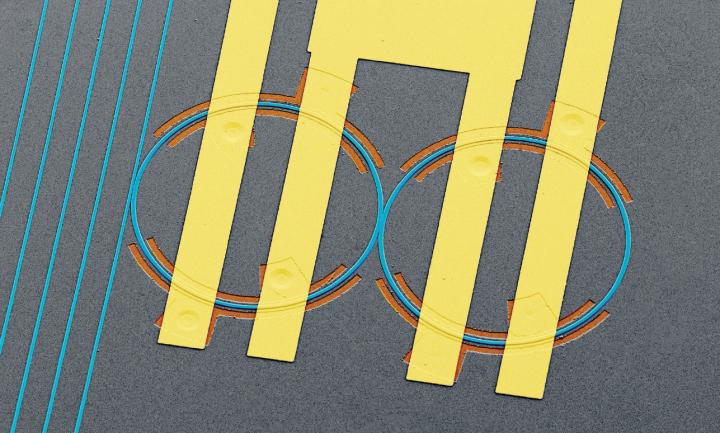CAMBRIDGE, Mass., Jan. 9, 2019 — An integrated photonics platform that can store light and electrically control its frequency in an integrated circuit is the newest development from the Harvard John A. Paulson School of Engineering and Applied Sciences (SEAS).
The team led by professor Marko Loncar had previously demonstrated the ability to propagate light through lithium niobate nanowaveguides with very little loss and to control light intensity with on-chip lithium niobate modulators. In the latest research, the team combined and further developed these technologies to build a molecule-like photonic system. According to the researchers, their work represents the first time that microwaves have been used to shift the frequency of light in a programmable manner on a chip.

“The unique properties of lithium niobate, with its low optical loss and strong electro-optic nonlinearity, give us dynamic control of light in a programmable electro-optic system,” said professor Cheng Wang at City University of Hong Kong. “This could lead to the development of programmable filters for optical and microwave signal processing and will find applications in radio astronomy, radar technology, and more.”
Many quantum photonic and classical optics applications require shifting of optical frequencies, a historically difficult task. “We show that not only can we change the frequency in a controllable manner, but using this new ability we can also store and retrieve light on demand, which has not been possible before,” said Mian Zhang, CEO of Hyperlight Corporation.
Next, the researchers aim to develop even lower-loss optical waveguides and microwave circuits using the same architecture to enable even higher efficiencies and, ultimately, achieve a quantum link between microwave and optical photons.
“The energies of microwave and optical photons differ by five orders of magnitude, but our system could possibly bridge this gap with almost 100 percent efficiency, one photon at a time,” Loncar said. “This would enable the realization of a quantum cloud — a distributed network of quantum computers connected via secure optical communication channels.”
The research was published in Nature Photonics (https://doi.org/10.1038/s41566-018-0317-y).
